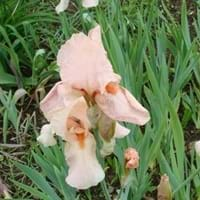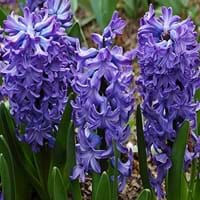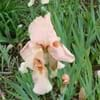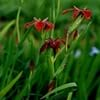Life Span
Perennial
Perennial
Type
Perennial
Bulb or Corm or Tuber
Origin
Hybrid origin
Mediterranean, Western Asia
Types
Not Available
Not Available
Habitat
gardens, Hillside, Riverbanks, Warmer regions, Wet forest
Mediterranean region
USDA Hardiness Zone
5-9
4-9
Sunset Zone
1a, 1b, 2a, 2b, 3a, 3b, 4, 5, 6, 7, 8, 9, 10, 11, 12, 14, 15, 16, 17, 18, 19, 20, 21, 22, 23, 24
21,22
Habit
Clump-Forming
Clump-Forming
Flower Color
White, Yellow, Blue, Purple, Orange, Pink, Rose, Coral, Peach, Burgundy, Lavender, Plum, Orange Red, Dark Salmon, Bronze, Chocolate, Black
White, Yellow, Red, Blue, Purple, Pink, Lavender, Violet
Flower Color Modifier
Bicolor
Bicolor
Fruit Color
Not Available
Not Available
Leaf Color in Spring
Light Green, Blue Green
Green
Leaf Color in Summer
Light Green, Blue Green
Light Green
Leaf Color in Fall
Light Green, Blue Green
Several shades of Green
Leaf Color in Winter
Light Green
Light Green
Leaf Shape
Long Linear
Long slender
Plant Season
Spring
Spring, Winter
Sunlight
Full Sun, Partial Sun
Full Sun, Partial Sun
Growth Rate
Medium
Medium
Type of Soil
Clay, Loam, Sand
Loam
The pH of Soil
Acidic, Neutral, Alkaline
Acidic, Neutral
Soil Drainage
Well drained
Well drained
Bloom Time
Spring
Early Spring, Spring, Late Winter, Indeterminate
Tolerances
Drought
Black Walnut Toxicity, Rabbit, Shade areas
Where to Plant?
Ground, Pot
Container, Ground, Pot
How to Plant?
From Rhizomes, Stem Planting
chipping, Offsets, scooping, Twin scaling, Vegetative
Plant Maintenance
Medium
Low
Watering Requirements
Does not require lot of watering, Keep ground moist, Water when soil is dry
Medium
In Summer
Lots of watering
Lots of watering
In Spring
Moderate
Moderate
In Winter
Average Water
Average Water
Soil pH
Acidic, Neutral, Alkaline
Acidic, Neutral
Soil Type
Clay, Loam, Sand
Loam
Soil Drainage Capacity
Well drained
Well drained
Sun Exposure
Full Sun, Partial Sun
Full Sun, Partial Sun
Pruning
Remove damaged leaves, Remove dead branches, Remove dead leaves
Remove damaged leaves, Remove dead branches, Remove dead leaves
Fertilizers
All-Purpose Liquid Fertilizer
All-Purpose Liquid Fertilizer, General garden fertilizer, Time release fertilizer
Pests and Diseases
Bacterial Diseases, Fungal Diseases, Viruses
Pests and diseases free
Plant Tolerance
Drought
Black Walnut Toxicity, Rabbit, Shade areas
Flower Petal Number
Single
Single, Double, Semi-Double
Foliage Texture
Medium
Medium
Foliage Sheen
Matte
Glossy
Attracts
Bees, Butterflies
Insects
Aesthetic Uses
Beautification, Showy Purposes
Beautification, Bouquets, Cottage Garden, Landscape Designing, Showy Purposes
Beauty Benefits
Not Available
Not Available
Environmental Uses
Air purification
Not Available
Medicinal Uses
No Medicinal Use
Not Available
Part of Plant Used
Flowers, Leaves, Rhizomes, Root
Flowers
Other Uses
Making Perfumes, Oil is used for aromatherapy, Used as a sedative, Used as essential oil
Decoration Purposes, Showy Purposes
Used As Indoor Plant
No
Yes
Used As Outdoor Plant
Yes
Yes
Garden Design
Cutflower, Foundation, Mixed Border, Rock Garden, Wall
Bedding Plant, Container, Cutflower, Mixed Border, Rock Garden / Wall
Botanical Name
IRIS 'Beverly Sills'
Hyacinthus orientalis
Common Name
Iris-Tall Bearded
Hyacinth, common hyacinth, garden hyacinth, dutch hyacinth
In Hindi
Beverly Sills Iris Plant
ह्यचीन्थ
In German
Beverly Sills Iris Pflanze
Hyazinthe
In French
Beverly Sills Iris Plante
jacinthe
In Spanish
Planta Iris Sills Beverly
jacinto
In Greek
Μπέβερλι Σιλς Iris Φυτών
υάκινθος
In Portuguese
Beverly Sills Iris planta
jacinto
In Polish
Beverly Sills Iris Roślin
hiacynt
In Latin
Beverly Sills Iris Planta
et hyacinthinas,
Phylum
Magnoliophyta
Magnoliophyta
Class
Liliopsida
Liliopsida
Family
Iridaceae
Liliaceae
Clade
Not Available
Angiosperms, Monocots
Tribe
Not Available
Not Available
Subfamily
Not Available
Scilloideae
Number of Species
Not Available
Season and Care of Beverly Sills Iris and Hyacinth
Season and care of Beverly Sills Iris and Hyacinth is important to know. While considering everything about Beverly Sills Iris and Hyacinth Care, growing season is an essential factor. Beverly Sills Iris season is Spring and Hyacinth season is Spring. The type of soil for Beverly Sills Iris is Clay, Loam, Sand and for Hyacinth is Loam while the PH of soil for Beverly Sills Iris is Acidic, Neutral, Alkaline and for Hyacinth is Acidic, Neutral.
Beverly Sills Iris and Hyacinth Physical Information
Beverly Sills Iris and Hyacinth physical information is very important for comparison. Beverly Sills Iris height is 50.80 cm and width 50.80 cm whereas Hyacinth height is 10.20 cm and width 5.10 cm. The color specification of Beverly Sills Iris and Hyacinth are as follows:
Beverly Sills Iris flower color: White, Yellow, Blue, Purple, Orange, Pink, Rose, Coral, Peach, Burgundy, Lavender, Plum, Orange Red, Dark Salmon, Bronze, Chocolate and Black
Beverly Sills Iris leaf color: Light Green and Blue Green
Hyacinth flower color: White, Yellow, Red, Blue, Purple, Pink, Lavender and Violet
- Hyacinth leaf color: Green
Care of Beverly Sills Iris and Hyacinth
Care of Beverly Sills Iris and Hyacinth include pruning, fertilizers, watering etc. Beverly Sills Iris pruning is done Remove damaged leaves, Remove dead branches and Remove dead leaves and Hyacinth pruning is done Remove damaged leaves, Remove dead branches and Remove dead leaves. In summer Beverly Sills Iris needs Lots of watering and in winter, it needs Average Water. Whereas, in summer Hyacinth needs Lots of watering and in winter, it needs Average Water.





